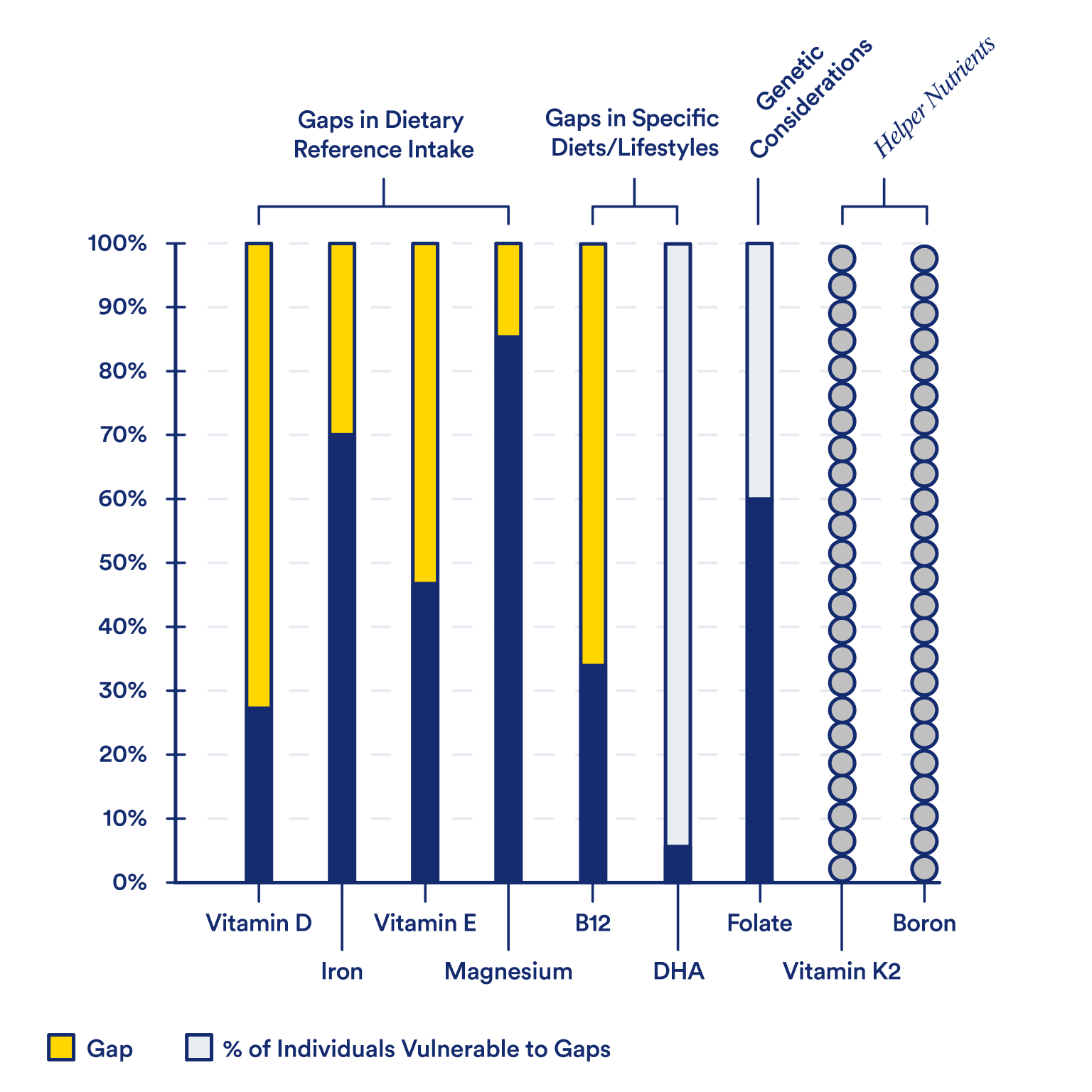If you’re wondering whether or not you actually need to take a daily multivitamin, the main thing to know is this: No matter how healthy you eat or what kind of diet you follow, it can be difficult for your body to get all the nutrients it needs from food, all the time. Every diet can have gaps—whether you’re vegan, paleo, keto, or eat everything. And there are also factors outside your diet that can play a role, like genetic variations, your age, and current life stage.
Four factors have helped our scientific team better understand nutrient gaps in women and men: dietary intake, specific lifestyle and diet, genetic considerations, and intake vs. utilization. Yes, we just dropped some terms on you. Let’s dig in.
1. Dietary Intake: Your body needs essential nutrients.
To understand the common gaps in diets, our science team relies on NHANES (National Health and Nutrition Examination Survey)—the world’s most comprehensive nutritional database—to look at a representative sampling of what Americans eat versus what they actually need.
There are a couple of ways to judge nutrient gaps. One is following the recommended daily values by the FDA (Food & Drug Administration) that you always see on food and supplement labels. But to get the full picture, we also look at The Institute of Medicine’s Dietary Reference Intakes (DRIs) and Estimated Average Requirements (EARs)—scientists love their acronyms, right?
Through analyzing all of this data, we’ve been able to zero in on some of the common nutrients that are lacking in men and women’s diets—and how those needs fluctuate according to age, sex, and different life stages, like pregnancy and menopause.











